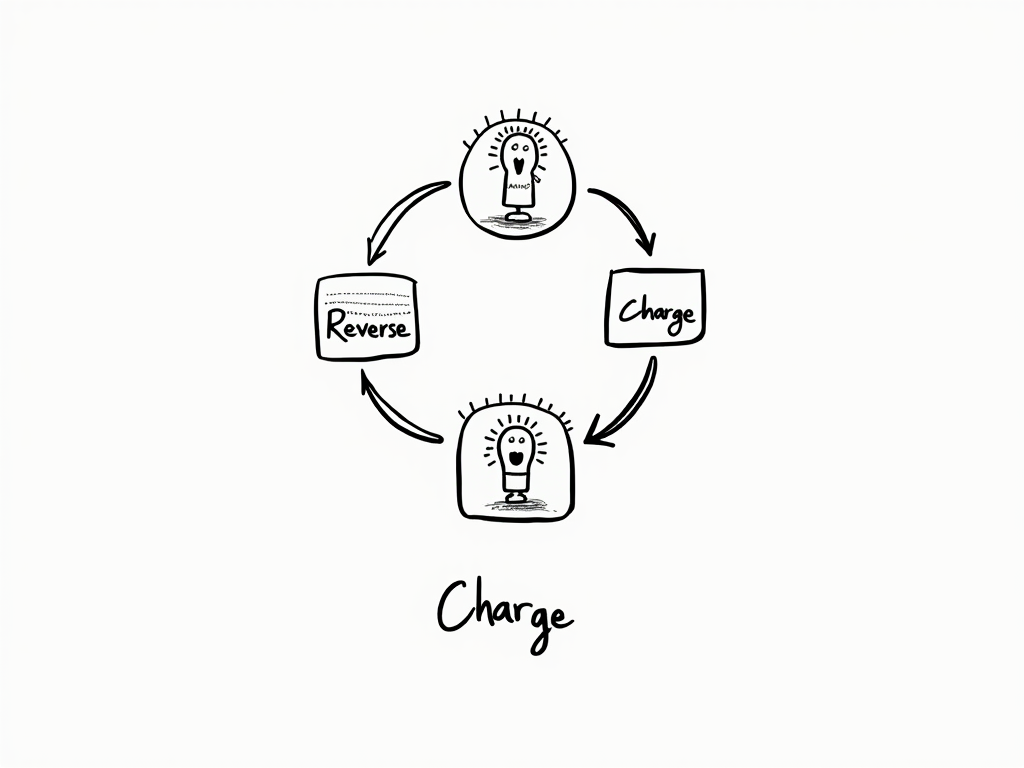
Social Tax and Pension Contributions for Self-Employed in Estonia: Complete Guide
Reading time: 12 minutes
Table of Contents
- Introduction to Self-Employment in Estonia
- Understanding Social Tax for Self-Employed
- Pension Contribution System
- Calculating Your Contributions
- Payment Procedures and Deadlines
- Legal Optimization Strategies
- Self-Employed vs. OÜ Comparison
- Common Mistakes and How to Avoid Them
- Conclusion
- Frequently Asked Questions
Introduction to Self-Employment in Estonia
Navigating Estonia’s social tax and pension system as a self-employed individual (FIE – füüsilisest isikust ettevõtja) often feels like deciphering a complex puzzle with moving pieces. Yet understanding these obligations isn’t just about compliance—it’s about securing your financial future while optimizing your present tax position.
Estonia’s digital-first approach to governance has streamlined many processes, but self-employed individuals still face unique challenges when managing their social contributions. Whether you’re a freelance designer working with international clients, a local consultant, or a traditional craftsperson, the fundamentals of the system apply equally—though your optimal strategy might differ significantly.
As Maris Leemets, a tax advisor at PwC Estonia, notes: “Self-employed individuals in Estonia often underestimate how significantly their contribution strategies today will impact their benefits tomorrow, particularly regarding pensions and health insurance coverage.”
Understanding Social Tax for Self-Employed
Core Components of Social Tax
In Estonia, social tax (sotsiaalmaks) isn’t just another tax—it’s your investment in social security benefits. For self-employed individuals, this 33% tax serves as the foundation for your healthcare coverage and contributes to your future pension. Unlike employed individuals where employers handle this, as a self-employed person, you’re responsible for both calculating and paying this amount.
The social tax breaks down into two main components:
- Health Insurance (13%): Funds the Estonian Health Insurance Fund (Haigekassa)
- Pension Insurance (20%): Contributes to your state pension
The critical point many miss: social tax is calculated on your business income after deducting business-related expenses, not on your gross revenue. This distinction can significantly reduce your tax burden when properly applied.
Minimum Obligation Requirements
Here’s where things get interesting—and potentially costly if misunderstood. Estonia sets a minimum monthly obligation for social tax regardless of your actual earnings. For 2023, this minimum monthly amount is calculated based on the minimum monthly wage (€820 in 2023) multiplied by the social tax rate (33%), resulting in a minimum monthly obligation of €270.60.
Even if you earned €0 in a given month, you’re still required to pay this minimum amount—unless you qualify for an exemption. These exemptions include:
- Being a recipient of a state pension
- Having a determined incapacity for work of at least 40%
- Receiving maternity benefits
- Being registered as unemployed
- Being under 16 years of age or at the retirement age
If none of these apply and you anticipate periods of low or no income, you’ll need to factor this minimum obligation into your financial planning—or consider an alternative business structure.
Pension Contribution System
The Three-Pillar System
Estonia’s pension system operates on a three-pillar model, each serving a distinct purpose in your retirement planning:
- First Pillar (State Pension): Mandatory, funded by social tax contributions
- Second Pillar (Mandatory Funded Pension): Previously mandatory for most, now voluntary since 2021
- Third Pillar (Supplementary Pension): Entirely voluntary, with tax incentives
For self-employed individuals, participation in the second pillar follows different rules than for employed persons. While the second pillar involves a 2% personal contribution and a 4% state contribution (redirected from the social tax), the mechanics of enrollment and contribution differ.
Jaak Uudmäe, a financial advisor specializing in self-employment, explains: “Many self-employed individuals don’t realize that joining the second pillar requires a conscious decision—unlike employed persons who might be automatically enrolled. This oversight can significantly impact long-term retirement planning.”
Recent Reforms and Their Impact
The 2021 pension reform fundamentally changed the landscape for all Estonian residents, but self-employed individuals face particular considerations. The reform made the second pillar voluntary, allowing participants to:
- Continue contributing
- Suspend contributions temporarily
- Withdraw accumulated funds (with tax implications)
- Transfer funds to personal investment accounts
For self-employed persons, this created both opportunities and challenges. While increased flexibility allows for better cash flow management during lean periods, it also places greater responsibility on individuals to ensure adequate retirement savings.
A real-world example illustrates this impact: Märten, a self-employed IT consultant in Tallinn, opted to suspend his second pillar contributions during the pandemic when his income temporarily decreased. While this preserved his short-term liquidity, calculations showed that this 18-month suspension could reduce his eventual pension by approximately €8,000 over his retirement years.
Calculating Your Contributions
Step-by-Step Calculation Method
Calculating your social tax and pension contributions might seem daunting at first, but breaking it down makes it manageable:
- Determine your business income: Calculate total revenue from self-employment activities
- Subtract allowable business expenses: Deduct costs directly related to earning that income
- Apply the social tax rate (33%) to this net business income
- Check against the minimum obligation: Ensure your calculated amount meets or exceeds the minimum monthly requirement
- Calculate second pillar contributions (if participating): Add 2% of your business income after expenses
Let’s walk through a practical example:
Anna, a self-employed translator, earned €25,000 in 2022 and had €7,000 in business expenses.
- Net business income: €25,000 – €7,000 = €18,000
- Annual social tax: €18,000 × 33% = €5,940
- Monthly social tax: €5,940 ÷ 12 = €495 (exceeds the minimum requirement of €270.60)
- Annual second pillar contribution (if participating): €18,000 × 2% = €360
Remember that for quarterly filers, calculations are based on actual quarterly income, not monthly averages—this matters for meeting minimum requirements.
Special Cases and Adjustments
Several special circumstances can affect your calculations:
- Business income fluctuations: Seasonal businesses may need to prepay during high-income periods
- Parallel employment: If you’re both employed and self-employed, employer contributions might offset your self-employment obligations
- Mid-year business start/end: Calculate proportionally based on actual business months
- Agriculture-specific rules: Special calculation methods apply for registered agricultural entrepreneurs
The most common mistake I see in my advisory practice is failing to properly account for parallel employment. If your employer is already paying social tax on your behalf that exceeds the minimum threshold, you may not need to make minimum payments during low-income months from self-employment.
Payment Procedures and Deadlines
Estonia’s tax system operates on a declaration basis, with self-employed individuals typically filing and paying quarterly. The key dates to mark in your calendar are:
- Quarterly advance payments: Due by the 15th of the second month following each quarter
- Q1 (January-March): May 15th
- Q2 (April-June): August 15th
- Q3 (July-September): November 15th
- Q4 (October-December): February 15th (following year)
- Annual tax return: Due by April 30th following the tax year
- Final payment: Due by October 1st following the tax year
Making payments is straightforward through the Estonian Tax and Customs Board’s e-Tax system (e-MTA). This platform not only processes payments but provides a comprehensive overview of your tax situation, including any outstanding obligations or overpayments.
Kaarel, a self-employed graphic designer, shared his experience: “Initially, I struggled with the quarterly payment system and often missed deadlines. Now I’ve set up automatic calendar reminders two weeks before each due date, which has completely eliminated late payments and the associated penalties.”
Legal Optimization Strategies
Expense Management and Deductions
One of the most effective ways to optimize your social tax burden is through proper expense management. Unlike employees with limited deduction options, self-employed individuals can deduct business-related expenses directly from their taxable income.
Common deductible expenses include:
- Office rental and utilities
- Business equipment and supplies
- Professional services (accounting, legal)
- Business travel and transportation
- Marketing and advertising
- Professional development and training
- Business insurance
The key is ensuring these expenses are properly documented and directly related to your business activities. The Estonian Tax and Customs Board has intensified scrutiny of business expenses in recent years, so maintain detailed records for all deductions claimed.
Strategic Planning Considerations
Beyond basic expense management, consider these strategic approaches:
- Income timing: When possible, balance income across quarters to avoid periods below the minimum threshold
- Business structure evaluation: Assess whether an OÜ (private limited company) might be more advantageous than operating as an FIE
- Family involvement: Consider involving family members in the business when appropriate and legitimate
- Voluntary contributions: Strategically participate in voluntary pension pillars for tax advantages
Maria, a successful self-employed consultant, implemented a hybrid approach: “After careful analysis with my accountant, I established an OÜ for my primary consulting work while maintaining my FIE status for smaller projects. This structure optimized my overall tax position while ensuring I maintained adequate social protections.”
Self-Employed vs. OÜ Comparison
Many entrepreneurs face the critical decision between operating as self-employed (FIE) or establishing a private limited company (OÜ). Here’s how they compare across key dimensions:
| Aspect | Self-Employed (FIE) | Private Limited Company (OÜ) |
|---|---|---|
| Social Tax Base | Business income after expenses | Salary paid (not company profits) |
| Minimum Obligation | Monthly minimum regardless of income | Only on actual salary paid |
| Personal Liability | Unlimited personal liability | Limited to invested capital |
| Administrative Burden | Lower (simplified accounting) | Higher (formal accounting required) |
| Profit Reinvestment | Taxed before reinvestment | Tax-deferred until distribution |
The distinction in social tax treatment is particularly significant. With an OÜ, you pay social tax only on actual salary drawn, not on all company profits. This creates potential for substantial savings, especially for businesses with significant reinvestment needs or irregular income patterns.
Consider Johannes, a self-employed IT consultant who earned €45,000 annually with €10,000 in expenses. As an FIE, his social tax obligation was approximately €11,550 annually. After converting to an OÜ and setting a modest monthly salary of €1,500 (with the rest retained in the company for later investment), his annual social tax dropped to approximately €5,940—a saving of €5,610.
Common Mistakes and How to Avoid Them
Calculation and Payment Errors
Based on data from the Estonian Tax and Customs Board, the most frequent compliance issues for self-employed individuals include:
- Misunderstanding the minimum obligation: Many self-employed individuals are surprised by the requirement to pay minimum social tax even during months with little or no income
- Incorrectly calculating the tax base: Failing to properly distinguish between gross revenue and business income after expenses
- Missing quarterly deadlines: Unlike regular employment with automated withholding, self-employed individuals must manage their own payment schedule
- Overlooking parallel employment effects: Not accounting for social tax already paid through employment relationships
To avoid these pitfalls, consider implementing these preventive measures:
- Set up a dedicated tax calendar with automated reminders
- Maintain separate business and personal banking accounts
- Consider professional accounting assistance, especially during your first year
- Regularly review your obligations through the e-Tax system
Documentation and Compliance Issues
Beyond calculation errors, documentation problems can lead to significant complications during tax reviews:
- Inadequate expense documentation: Failing to maintain proper receipts and explanations for business expenses
- Mixed personal and business expenses: Not clearly delineating between personal and business-related costs
- Missing special registrations: Some activities require specific registrations beyond basic self-employment status
Tiina, a self-employed language teacher, learned this lesson the hard way: “During my tax review, I couldn’t provide adequate documentation for my claimed home office expenses. This resulted not only in additional tax but also penalty interest. Now I maintain a detailed log of all business activities conducted in my home office along with supporting utility bills.”
Conclusion
Navigating Estonia’s social tax and pension contribution system as a self-employed individual requires attention to detail and strategic planning. While the system may initially seem complex, understanding the fundamental principles and requirements enables you to make informed decisions that balance immediate financial needs with long-term security.
The key takeaways for self-employed individuals in Estonia are:
- Recognize that social tax is not just an obligation but an investment in your healthcare coverage and future pension
- Plan for minimum obligations during low-income periods or consider alternative business structures
- Take advantage of legitimate expense deductions to optimize your tax position
- Stay informed about pension system changes and make conscious decisions about pillar participation
- Consider whether your current business structure (FIE vs. OÜ) best serves your financial interests
With proper planning, Estonia’s social contribution system need not be a burden but can instead serve as a foundation for sustainable business operations with appropriate social protections. The digital infrastructure and relatively straightforward compliance processes make Estonia one of the more accessible environments for self-employment, despite the minimum obligation requirements.
Remember: your approach to social contributions today will significantly impact your access to healthcare, disability benefits, and retirement income in the future. Investing time in understanding and optimizing your contributions is an investment in both your business and personal security.
Frequently Asked Questions
What happens if I can’t afford to pay the minimum social tax amount during a low-income month?
If you genuinely cannot afford the minimum payment, you should first check if you qualify for any exemptions (pension receipt, registered unemployment, etc.). If no exemptions apply, you’ll accumulate tax debt that will eventually need to be paid. The Tax and Customs Board can arrange payment plans for those experiencing temporary difficulties. However, persistent inability to meet minimum obligations might indicate that self-employment is not financially sustainable or that an alternative business structure like an OÜ might be more appropriate for your situation.
How does having both employment and self-employment income affect my social tax obligations?
When you have both employment and self-employment income, your employer’s social tax contributions can offset your self-employment obligations. If your employer pays at least the minimum social tax amount on your behalf in a given month, you won’t need to pay the minimum amount on your self-employment income for that month. However, you’ll still need to pay social tax on your actual business income when filing your annual return. This coordination happens automatically in the tax system when you file your returns properly, but you should track both income streams carefully to ensure accurate reporting.
Can I voluntarily pay more than the required social tax to increase my future pension?
The mandatory social tax (33%) cannot be voluntarily increased beyond what is calculated based on your actual business income. However, you can enhance your future retirement income through Estonia’s voluntary pension pillars. The third pillar, in particular, offers tax advantages for voluntary contributions. Additionally, if you’re participating in the second pillar, you can make supplementary contributions beyond the standard 2%. These additional contributions won’t increase your state pension (first pillar) but will significantly boost your overall retirement funds. Consult with a financial advisor to determine the optimal contribution strategy based on your age, income, and retirement goals.



